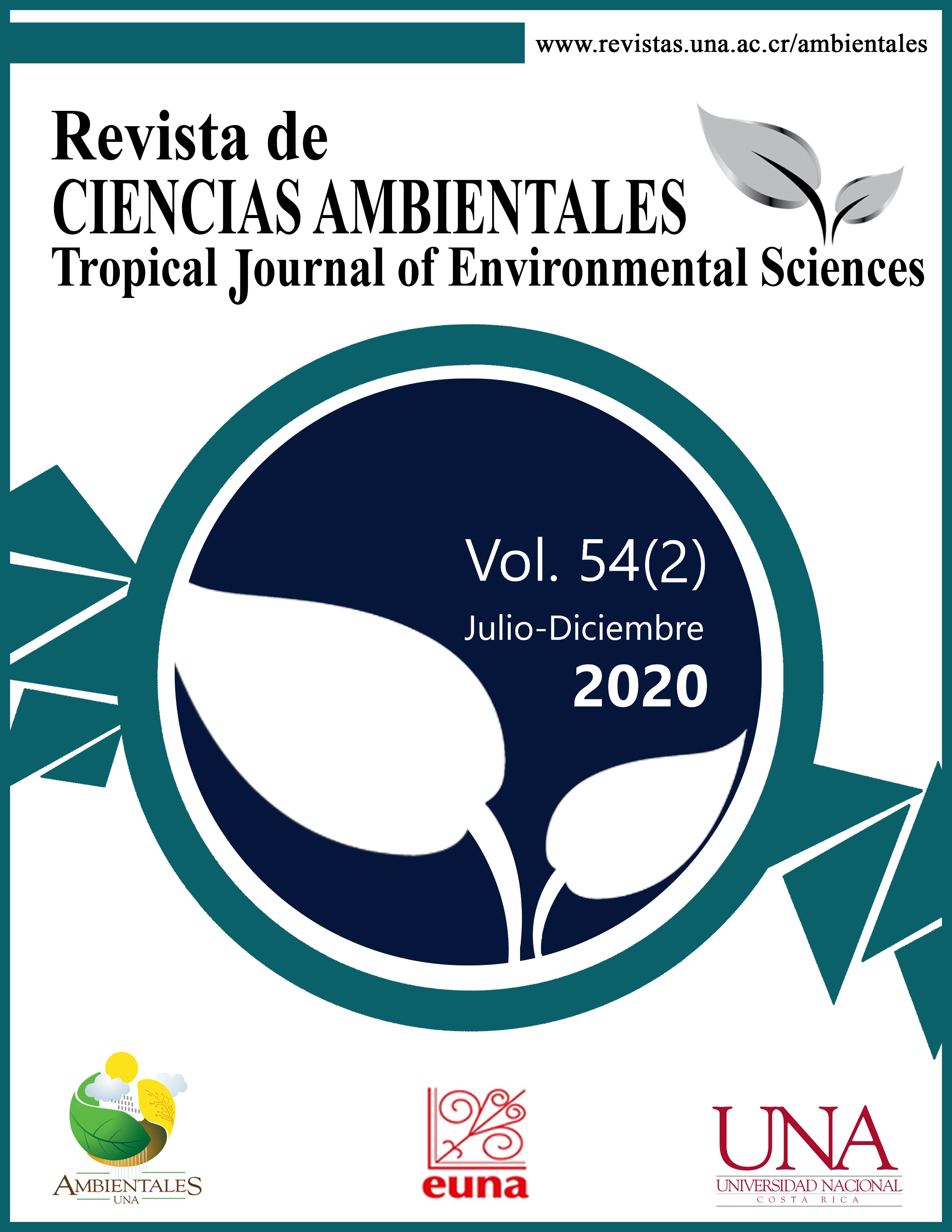Genetic Improvement and Costs Associated With the Management of Clonal Plantations of Swietenia Macrophylla in the Huetar Norte and Atlántica Region, Costa Rica
DOI:
https://doi.org/10.15359/rca.54-2.10Keywords:
Hypsipyla grandella; Plantation silviculture; Swietenia macrophyllaAbstract
[Introduction]: The main limitation to cultivate commercial plantations of Swietenia macrophylla in Tropical and Subtropical Americas has been the devastating effect of the attack of shoot borer Hypsipyla grandella. Complementarily, to grow mahogany using genetically superior material on good quality soils, and with an effective silvicultural system to control the shoot borer remains an unfulfilled desire in tropical countries. [Objective]: We estimated genetic improvement and costs associated with commercial mahogany clonal plantations. [Methodology]: To estimate costs, we used, as a base input, the information recorded in the field on all materials and labor used in the establishment and management activities up to four years in two clonal plantations. We calculated the percentage of total volume superiority of the five best clones concerning the average per trial. [Results]: It is estimated that, for an initial density of 1 111 trees* ha-1, the estimated total basic cost for the establishment and cultivation of the best mahogany clones up to four years ranges between USD 3 599 - 3 810 / ha, depending mainly on the climate of the site and the method of weed control used. The cost of the shoot borer control is USD 356.64 / ha, representing 9.9 % of the total basic cost. In terms of genetic improvement, the percentage of total volume superiority of the five best clones in each site concerning the general average of the corresponding trial varied between 46 and 93%; this showed the positive effect that the use of superior clones has. [Conclusions]: The cost of the shoot borer control should not be a limiting factor for the plantation to be profitable. The dasometric variables analyzed to show that, at the age of four years, the selection of clones reaches the growth expectations, which is evidenced by a superiority of up to 93% in the total volume when that is compared with the general average of the trial.
References
Chinchilla, O., Meza, V. y Corea A. E. (2017). Cultivo de clones superiores de caoba (Swietenia macrophylla) en sistemas agroforestales. Sistema de Información Académica UNA. Instituto de Investigación y Servicios Forestales INISEFOR, Costa Rica, UNA.
Corea, A. E. y Chinchilla, O. (2016). El cultivo de Swietenia macrophylla. Universidad Nacional, Instituto de Investigación y Servicios Forestales, Mejoramiento y Cultivo de Caoba 1, 31.
FAO. (2014). The State of the World’s Forest Genetic Resources. Commission on Genetic Resources for Food and Agriculture. Food and Agriculture Organization of the United Nations, Rome.
Fondo Nacional de Financiamiento Forestal [FONAFIFO]. 2018. Distribución de las hectáreas contratadas en el Programa de Pago por Servicios Ambientales, por año y por modalidad. http://www.fonafifo.go.cr/psa/estadisticas/gePSA-HectareasContratadas.pdf
Global Wood. (2017). Caoba. Estados Unidos. http://www.globalwood.org/product/catalog_details.asp?item_no=11565
Gonçalves, S., Piña-Rodrígues, F., Piotto, D.. Batista, A., Menezes, M., Brienza Junior, S., Brito, M., & Calmon, M. (2019). Research Gaps and Priorities in Silviculture of natives species in Brazil. Working Paper. WRI Brasil. https://wribrasil.org.br/pt/publicacoes
Griess, V. C. y Knoke, T. (2011). Can native tree species plantations in Panama compete with Teak plantations? An economic estimation. New Forests, 41, 13–39. https://doi.org/10.1007/s11056-010-9207
Namita, E.; Vaz de Arruda, R. (2005). Fertilização em viveiros para produção de mudas de Eucalyptus e Pinus. Nutrição e fertilização florestal, 168-190. http://engenhariaflorestal.ufsc.br/files/2017/08/Apostila-Fertiliza%C3%A7%C3%A3o-em-Viveiros-de-Mudas-de-Eucalyptus-e-Pinus.pdf
Patiño, V. (1997). Genetic Resources of Swietenia and Cedrela in the Neotropics: proposals for coordinated action. FAO. http://www.fao.org/3/AD111E/AD111E06.htm#ch6
West Penn Hardwoods. (2017). Bloque rizados de tablón caoba hondureña. https://www.westpennhardwoods.com/catalog/Curly-Honduran-Mahogany-Heel-Blocks.aspx?guid=f494fa7d-834e-4915-9c89-8398f14d948d
Downloads
Published
How to Cite
Issue
Section
License

This work is licensed under a Creative Commons Attribution-NonCommercial-ShareAlike 4.0 International License.



















